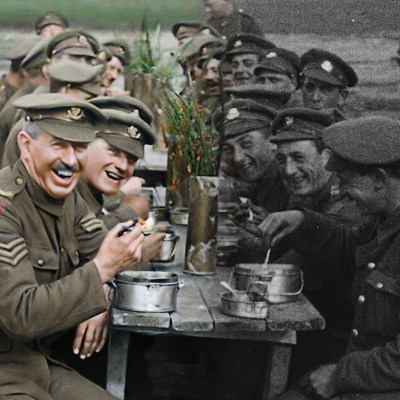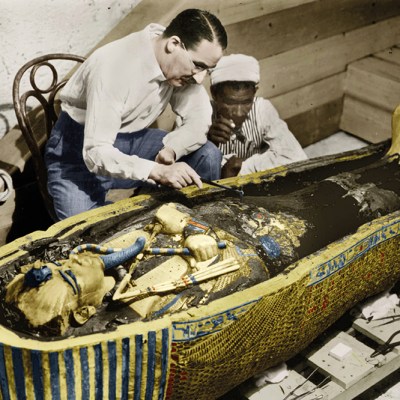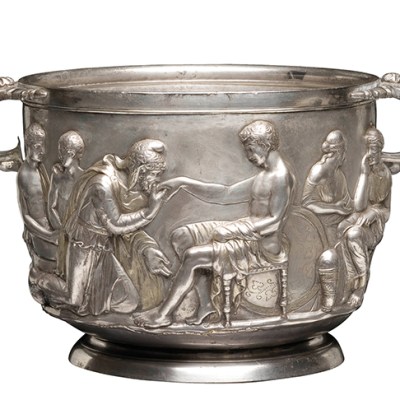At first glance, the canvas hanging at the rear of the ANAMED Gallery in Istanbul appears blank. But, as the viewer approaches, the movement triggers UV lights that slowly expose a ghostly silkscreened image, created by Bruno Vandermeulen and Danny Veys, of the Roman theatre in the ancient city of Sagalassos.
The landscapes of south-western Turkey that the two Belgian photographers have been exploring and photographing for the past dozen years likewise do not immediately reveal all that they hold. The regions of Anatolia that were known in antiquity as Pisidia and Pamphylia have been settled for thousands of years, but the remnants of past civilisations that dot their forests, hillsides and farmland are little-known and largely unexcavated.
Vandermeulen and Veys first became acquainted with the area when hired to document finds at the comparatively well-studied site of Sagalassos. Eventually, they turned their attention to the surrounding landscape, creating a body of black-and-white images quietly evoking the intermingled traces time and history have left on the land.
Installation view of ‘Intersecting Past and Present: A Photographic Exploration’ at the ANAMED Gallery, Istanbul. Courtesy ANAMED Gallery
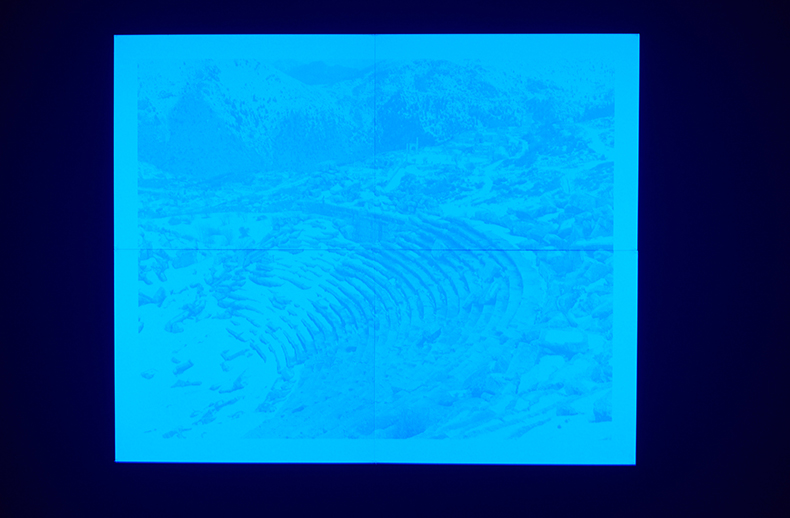
At the ANAMED Gallery, an exhibition of the photographers’ work also includes archival prints from 19th-century books documenting the early travels of European photographers in Ottoman lands. The duo work in a painstaking way that employs similar equipment and techniques as those used by predecessors such as William Henry Fox Talbot and James Robertson: large-format cameras, tripods and black-and-white sheet film that must be changed in a tent. ‘These methods take much more time, you’re limited in the amount of images you can take in a day, and you don’t immediately see the results,’ Vandermeulen says. ‘You have to be more selective, so it’s also a kind of meditation, to stroll around the sites and try to decide what to photograph and how.’
Photography has been linked with archaeology since it was invented. The earliest surviving images of ancient monuments in what is now Turkey, for instance, are daguerreotypes produced in 1843 by the French artist Joseph-Philibert Girault de Prangey. But the earlier era that Vandermeulen and Veys are looking to also has its share of troublesome associations. In the 19th century, archaeology and photography were construed by European practitioners as part of the development of ‘modern’ sciences and sensibilities, often framed in contrast with the ‘exotic’, more ‘primitive’ civilisations being documented.
Because of the effort and expense involved in early photography, most 19th-century images of archaeological digs were commissioned by the excavators, Vandermeulen points out. ‘This means they only showed the view of whoever paid for it, whether this was the commercial interests of a company or the image-building project of a nation,’ he says, contrasting this with his and Veys’ artistic independence.
Unnamed settlement in the eastern reaches of what used to be Pamphylia. Parts of a fortification system, an agora, baths and a handful of temples still stand. Courtesy ANAMED Gallery; © Bruno Vandermeulen and Danny Veys
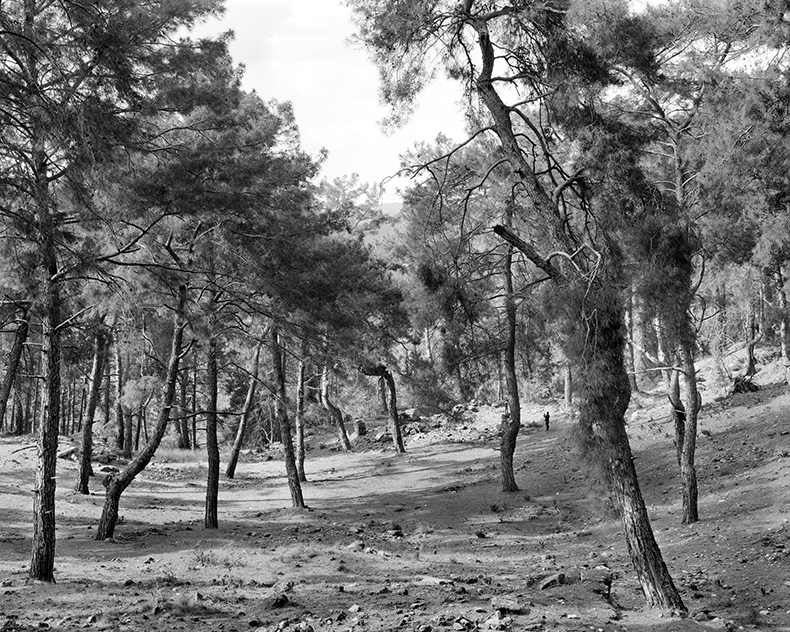
Early photographers often focused on the monumentality of sites and finds, sometimes posing archaeologists in front of impressive pieces like big-game hunters with their trophy kills. Vandermeulen and Veys instead point their cameras into the thick forests around the ancient town of Sia, where the trees all but obscure the scant remnants of a stone wall, or out over a misty promontory at Sagalassos, where scattered carved stones blend into the natural rock outcroppings.
In their work, the 19th-century pretence to a scientific objectivity that never really existed in photography is replaced by an overtly subjective approach. Landscapes imbued with history – a towering rock from the area where limestone was quarried to build Sagalassos’s monuments, a marsh where pollen cores have revealed thousands of years of ecological change – take on an importance equal to the historical artefacts themselves.
The pair also set themselves apart from the contemporary landscape photographers – think Robert Adams or Edward Burtynsky – who focus on the damage wrought by people upon the natural world. Instead of documenting a ‘human-altered landscape’, they have defined their approach as looking at the ‘history-altered landscape’ – a concept taking in a much longer timespan and more overlapping layers of transformation.
Installation view of ‘Intersecting Past and Present: A Photographic Exploration’ at the ANAMED Gallery, Istanbul. Courtesy ANAMED Gallery

Rolling hills shimmer in a silkscreen print on geotextile, a permeable synthetic material used by archaeologists to separate and protect excavation layers. It shows the site near Sagalassos where soil erosion revealed once-buried stone tools dating back to the Neanderthals. A silkscreen print of the steep cliffs around the ancient city of Termessos renders further obscure overgrown ruins that were quickly encroached upon again by nature when the site was abandoned sometime around the 5th century.
Despite working with analogue cameras and film, Vandermeulen and Veys had been scanning their photographs and printing them digitally until the Covid-19 pandemic brought their already slow photography process to a near standstill. Unable to travel and create new images, they began experimenting with 19th-century processes such as salt prints and albumen prints, as well as modern alternative processes such as silkscreen, UV and photo polymer prints. All of the images in ‘Intersecting Past and Present’ are printed by hand, making each piece unique and adding another layer to the idea of the palimpsest that is central to the pair’s work.
Not all pieces in the show are equally successful; some older images employing a dramatic tilt-shift effect tip too far into artifice, as if depicting a scale model of an ancient city rather than a real place. But the overall body of work creates a compelling impression of places both eternal and ever-changing, of presence sitting with absence, of the passing and permanence of time. ‘When you photograph a monument, it has been excavated, it is static,’ Vandermeulen says. ‘A landscape is more of a process.’
‘Intersecting Past and Present: A Photographic Exploration’ is at ANAMED Gallery, Istanbul, until 17 October. A companion photo book, The Tortoise Arrived Alone One Day, is published by Yapı Kredi Yayınları.

